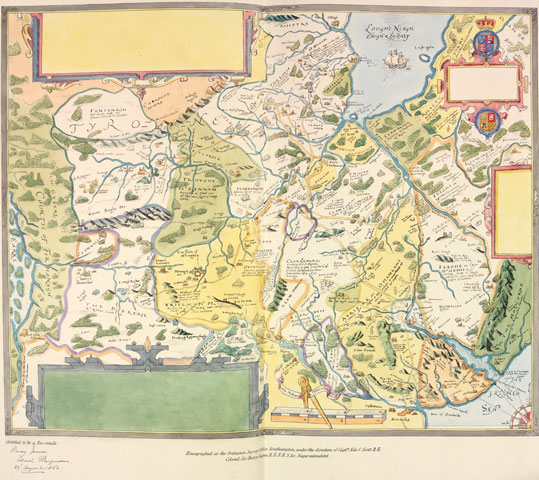By Fiona Fitzsimons
Between 1556 and 1622 the English State commenced a series of plantations to colonise Ireland. What started under the Tudors as a reform option became the predominant policy under James I.
We can use the published Patent Rolls to trace what land was transferred and to whom. Searching for land grants in the Tudor plantations is a straightforward business. There are published Calendars of Patents, meticulously indexed, of all the Tudor sovereigns. Research in the reign of James I is not as clear-cut. The Irish Manuscripts Commission has published a facsimile of the Calendar of Patent Rolls … James I, but it lacks an index. Even when we find patents, we only get the names of the undertakers. We have to revert to other sources to search for the names of tenants on the land.

As a rule of thumb, there are no short cuts in research. In this instance, however, there is one: the Irish Commission of 1622 was established because Whitehall was uneasy with colonial governance in Ireland, including how the plantations were progressing. The late Victor Treadwell traced the Commission’s surviving records and arranged them in sequence for publication. These records bring together the names of all the plantation undertakers, and in some instances the names of freeholders, leaseholders and copyholders at that time.
We can use the Commission records to trace ‘alterations … of estate, tenure, condition [and] covenant’ in the Laois–Offaly plantation (1556–7) almost 70 years after the first grants were made, and of the Munster plantation (1585) almost 40 years later. We find the names not only of undertakers but often (though not always) of freeholders, leaseholders and copyholders, as well as lands leased to ‘mere Irish’.
The Laois–Offaly scheme emerges as an experiment, to work out the mechanics of plantation. Undertakers had to defend their seignories, construct/repair castles and bawns, build English houses and provide military service. Subsequently, the State used plantations to socially engineer Irish society after conquest—in Munster in the aftermath of the Desmond Rebellion, in Ulster after the Flight of the Earls. Plantations broke the power of local lordships and introduced English civility and religion, settling English tenants on the land.
By the time we get to the later plantations there wasn’t the same attempt at social engineering—servitors were allowed to retain their own tenants with no preconditions. We find the names of undertakers but rarely of their tenants in Wexford (1618), Longford (1620), Ely O’Carroll, King’s County (1620), O’Rourke’s lordship, Leitrim (1621), Iregan (Ó Duinn territory), Queen’s County (1621), Fercal and Kilcoursey (McCoghlan territory), King’s County (1621), and [Ó] Melaughlin territory, Co. Westmeath (1621).
These later schemes were straightforward land-grabs to satisfy servitors disappointed by earlier plantations. Plantation was the dominant policy to copper-fasten conquest, borne out by subsequent redistribution of land in the 1650s after the Cromwellian and in the 1690s after the Williamite conquests.
Fiona Fitzsimons is a director of Eneclann, a Trinity campus company, and of findmypast Ireland.
